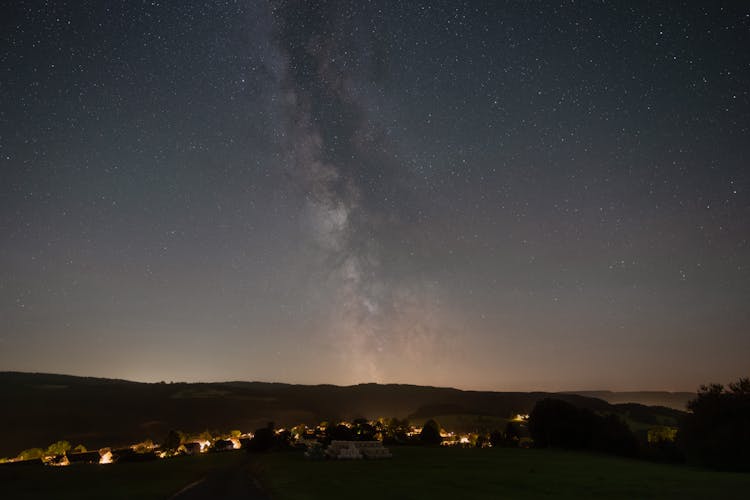Table of Contents
TLDR:
- 🛸 The Tired Light Theory suggests photons lose energy over vast distances.
- 🔴 This energy loss causes the observed cosmological redshift.
- 🌌 Unlike the expanding universe model, this theory does not require object movement.
- 📉 Yet, observational evidence supports the expansion model more robustly.
- ⚖️ Critically analyzed through surface brightness tests and other empirical observations.
The Tired Light Theory presents a fascinating, though contentious, alternative perspective in the realm of cosmology. Proposed originally by Fritz Zwicky in 1929, it suggests that the redshift observed in light from distant galaxies is not due to the expansion of the universe, as commonly accepted in modern cosmology. Instead, this theory posits that as photons travel through the cosmos, they encounter and interact with various material particles, such as electrons or protons, leading to energy loss.
This process results in a decrease in photon frequency, hence the redshift. The longer the distance traversed, the more significant the energy loss—and thus, the greater the redshift observed. Zwicky's hypothesis challenges the Big Bang model, which links redshift directly to the recession of galaxies and an expanding universe. The Tired Light Theory posits that light simply becomes "tired," losing energy rather than being stretched due to cosmic expansion.
Energy Loss Mechanism: How It Works
This energy loss mechanism relies on the behavior of photons as they traverse through space. Imagine light as it moves through the void of the universe. As it travels vast distances, interactions with cosmic matter—like other particles—can draw energy away from it, resulting in lower frequencies of light. This energy transfer might occur in many ways: scattering, where light rays bounce off particles, or absorption, where energy is taken up by matter.
The implications of this theory are significant; if valid, it would suggest that astronomical observations must be revisited. Under the Tired Light model, every distant star or galaxy observed is merely showing light that has been altered, rather than reflecting an accurate account of its motion through space. This fundamentally challenges our understanding of cosmic phenomena, demanding a reassessment of how we interpret redshift and galactic movements.
Moreover, this could have profound implications for our understanding of cosmic distances and the fabric of spacetime itself. By framing light as a weary traveler, the Tired Light Theory invites a rethinking of fundamental principles in physics related to the behavior of light and matter on an astronomical scale.
Nevertheless, this theory has encountered significant critique and skepticism within the scientific community. Many argue that if light truly lost energy in the way the Tired Light Theory suggests, we would observe blurring effects in the images of distant galaxies. Yet, images taken by telescopes, such as the Hubble Space Telescope and more recently the James Webb Space Telescope, show structures that are sharp and well-defined.
Additionally, studies of surface brightness—the perceived brightness of an object per unit area—reveal that in an expanding universe, brightness diminishes with distance. In a static universe, contrary to what Tired Light Theory posits, surface brightness would remain constant with distance, something that is not reflected in observations.
Critique and Observations
Today, the Tired Light Theory has not only been contested but largely debunked, particularly with the abundance of observational evidence favoring the Big Bang theory and the expanding universe model. Numerous studies probing the light from supernovae and other cosmic phenomena have consistently shown results that align more closely with the notion of an expanding universe rather than the closed lens of a tired light model.
Moreover, another substantial bump in the road for this theory comes with dark energy research and observations related to the cosmic microwave background radiation. These phenomena provide strong evidence against the tired light notion and support the expanding universe model, solidifying its prevalence among astrophysicists and cosmologists.
- 📊 Hubble's Law and Distance Measurements: Explore how redshift correlates with cosmic distances.
In summary, while the Tired Light Theory adds an intriguing dimension to discussions about cosmic redshift, the evidence supporting established cosmological models is overwhelming. The journey of light through space may be complex, but current observational astronomy aligns more convincingly with a dynamic, expanding universe than one where photons simply lose energy over their travels.
Conclusion: Tired Light Theory's Legacy
Ultimately, the Tired Light Theory may serve as a critical historical stepping stone in the evolution of astrophysics, prompting deeper inquiries into the nature of light and cosmic structure. Its attempt to explain the universe's redshift without invoking expansion illustrates the creative approaches taken by scientific minds in grappling with the cosmos.
Understanding these theories and their implications enhances our grasp of the universe and its subtleties. While the Tired Light Theory may not hold a prominent place in modern cosmology, its investigation has undoubtedly contributed to the richness and depth of our current understanding. Further exploration and interpretation will undoubtedly continue as technology advances and our observational capabilities expand.
What is the Tired Light Theory?
Why is the Tired Light Theory criticized?
🌌 Gskyer Telescope, 70mm Aperture - Great for exploring the universe!
🔭 Telescope for Adults & Kids - Perfect for aspiring astronomers!
🪐 High Powered Telescope - Uncover the mysteries of the cosmos!
🌠 ToyerBee Telescope - Your gateway to the stars!

The Universe's True Nature: Beyond the Big Bang Model
Navigation
Latest Posts
Developing Emotional Resilience for a Stronger You
Exploring Energy Loss in Cosmic Light
Enhancing Well-Being: Professional Help for Managing Work Stress